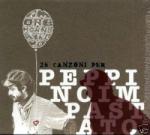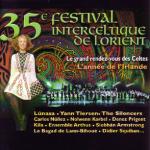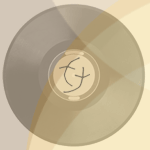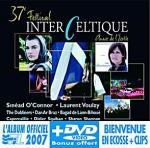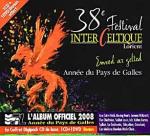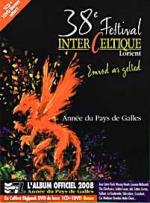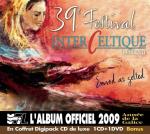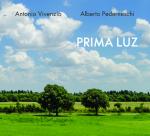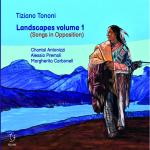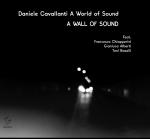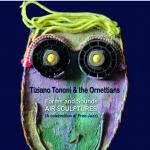Shop
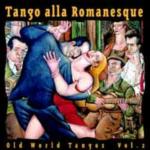
AAVV
Tango alla Romanesque (Carlo Buti, Oscar Carboni, Maria Tanase, Tino Rossi, ...)
RIENCD 40
Oriente
Italia
Tango alla Romanesque (Carlo Buti, Oscar Carboni, Maria Tanase, Tino Rossi, ...)
RIENCD 40
World Music
Oriente
Italia
Tango alla Romanesque
The second CD in our Old World Tangos series focuses on the "Romanic" countries of Italy, France, and Romania - with a Greek encore.
Research of the individual titles was often difficult - we do not even know the first names of some of the singers. Tango is light music and evidently it was assumed that interest in serious information on the life and artistic career of tango singers did not exist.
This is particularly true in the case of ITALY. The sole source of information on popular music is often the annual reviews of the San Remo Song Festival - an event beneath the dignity of such a leading music nation as Italy. CARLO BUTI (1900-1963) is the only well-known name not entirely associated with tango, but the same also applies to the magnificent OSCAR CARBONI - just a tiny reference to his performance at the 1951 San Remo Festival - everything else is lost in the realms of the history of popular music.
The great Corsican singer TINO ROSSI (1907-1983) is, in contrast, still immensely popular - his own website is just one expression of the continued adoration of his fans.
Once again, ROMANIA has a special place on this CD; discovery of this country's historical musical heritage was presented in the OLD WORLD TANGO series vol.1 (Echoes from afar, RIENCD20). We are particularly proud of the recordings of the legendary "magic bird" MARIA TANASE (1913-1963). These are the only two tangos that she sang; the recordings are not in any archives but only contained on the few remaining original shellacs; a musical treasure even if the sound quality is poor and Juanita is not a genuine tango. Pride in this discovery outweighs - may tango and HiFi purists forgive us. Anyway, Juanita is worth releasing just on account of its incredible pianist.
JEAN MOSCOPOL (1903-1983) and TITI BOTEZ (1901-1957) are familiar names from the Echoes CD and are joined here by the "last troubadour" CRISTIAN VASILE (1908-1985) and the enigmatic GION (1910-?) - all we were able to find out about him was that he was a widely acclaimed coffee house singer in the Romanian spa town of Sinaia in the early thirties.
And finally, two Greek tangos, sung by DIMITRIS PHILIPPOPOULOS, and somehow also romanesque - there was never a truly "Greek" tango scene, rather it was an offshoot of the Italian and French tangos. Not that this in any way detracts from the quality of the two Phillipopoulos tangos. (cf. the notes on RIENCD20)
And there is something more to celebrate - a kind of "monument to the unknown tango guitarist". The first time we heard it was in the tangos that Pjotr Leschenko (cf. RIENCD06 and 12) recorded in the thirties: An unmistakable, delightfully schmaltzy Hawaiian guitar sound that at once made us sit up and take notice and which we encountered again in numerous tango recordings from England, Romania, and Italy. What all these recordings have in common is that they were made for the Columbia label that was very active in the thirties. The unknown "maestro" can also be heard in this collection - on the Greek tango entitled Mesanichta, also a Columbia recording. Is it a question of a coincidence, an entire school of guitarists, or the eternally wandering Hawaiian guitarist who always turned up in that part of Europe where tangos were recorded for Columbia? We do not know, but would welcome any relevant information on the subject.
Till Schumann
The tango in the Europe of the 20s and 30s - a ballroom dance, a music style, an attitude to life?
The first Argentine tango musicians arrived in Paris before World War I to make recordings of their new music. Art circles, intellectuals, and members of the aristocracy developed an interest in this flamboyant form of dance and music. The Argentinian tango was the dance and musical expression of the rootlessness, poverty and despair of immigrants, and also compensation in the form of an eroticism displayed with a directness previously unknown. The elements of the "disrespectable", the gutter, the "forbidden" were adopted as an artistic style in the salons of many European cities. However, at the time most Europeans were unable to understand the true nature of the Argentinian tango. In Europe the tango developed into a form of ballroom dance; it was deprived of its creative force and given fixed, easy-to-follow rules for the ballrooms of the pleasure-seeking "Jeunesse Dorée" of the 20s and 30s. Orchestras playing the tango were light orchestras in the truest sense of the word.
The bandoneon (incidentally an instrument invented in Germany) was frequently replaced by the accordion - an instrument easier to play. The texts of the tangos were romantic, wistful, rarely provocative - at the very most melancholy. The yearning for all-liberating, romantic love was reflected in most of the songs - in contrast to the unvarnished, true-to-life poetry of the Argentinian texts.
The European tango is a cliché. It staged a feeling for life that people in Europe readily adopted in their search for identity in a changing world which was characterised by increasing industrialisation after World War I. The tango was essentially a phenomenon of the cities in Europe, too. It was not confined to any one region and developed its appeal beyond national and cultural borders. This meant that many successful tangos were translated into a variety of different languages. In the Europe of seventy years ago the tango had already become a synonym for globalisation - long before this became a term in common use. European tango was light music, popular music, a ballroom dance that crossed national boundaries and traditions. It was no more, but no less than the pop music of the Golden Twenties and of the thirties, a musical link in the urban society of the twentieth century.
Gigi Backes
Tracks
1. CARLO BUTI: Passione Argentina (De Angelis/Di Legge) 3:11
2. G. CESTARI: Chitarra Romana (Di Lazzaro) 3:27
3. FERNANDO ORLANDIS: Violino Tzigano (Cherubini/Bixio) 3:58
4. RICO BARDI: Scrivimi (Raimondo/Frati) 3:15
5. E. FUSCO: Tango della banana (Rota/Olivieri) 2:56
6. OSCAR CARBONI: Tango del Mare (Rodi/Nisa/Redi) 2:59
7. TINO ROSSI: Tango de Marilou (Mariotti/Marino) 2:54
8. TINO ROSSI: C' etait un musicien (Falk/Schar) 2:50
9. TINO ROSSI: Ecris-moi (Raimondo/Poterat) 3:04
10. MARIA TANASE: Daca Nu Te Cunosteam (Constantinescu/Vladoianu/Mirea) 3:05
11. MARIA TANASE: Juanita (Constantinescu/Vladoianu/Mirea) 3:17
12. GION: Adio, Doamna (Ionel Fernic) 3:13
13. GION: Da-Mi Iarasi Gura Ta! (unknown) 3:18
14. TITI BOTEZ: Crizanteme (Petre Andreescu) 3:04
15. TITI BOTEZ: Marcitta (Eugen Semo) 3.02
16. CRISTIAN VASILE: Jyra Jyra (Discepolo/I.Pribeegu) 2:45
17. JEAN MOSCOPOL: Ai Sa Iubesti Odata Si Tu (Petre Andreescu) 2:21
18. DIMITRIS PHILIPPOPOULOS & D. EVSTRATIOU: Mesanichta (Th. Naltsa) 3:04
19. DIMITRIS PHILIPPOPOULOS & D. EVSTRATIOU: Klapse (Th. Naltsa) 2:57
Our Playlist
Our olaylist on Spotify, dedicated to P
re Minimalism, Minimalism and Post Minimalism.



















